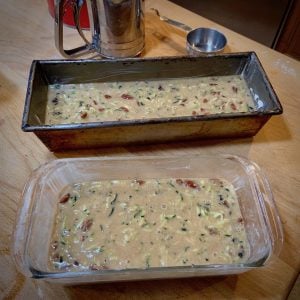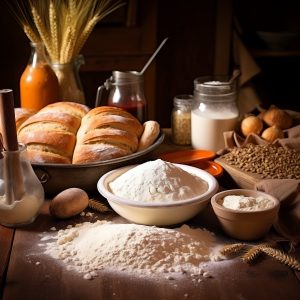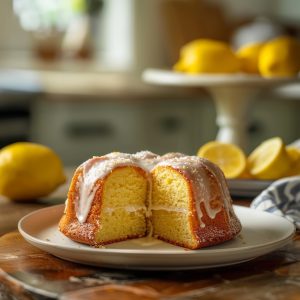Non-stick pans for Baking – Yes or No?
The right pan can make or break your baking. A good pan ensures even cooking, easy release, and excellent results. Choosing the best pan depends on what you’re baking.
Cakes, cookies, bread, and pies all have different needs. The pan’s material, shape, and size matter more than you might think.
For instance, a nonstick pan makes cake release easier, but it may not be brown either. Glass pans hold heat longer but take longer to heat up. Aluminum pans heat quickly and evenly but can react with acidic ingredients. Knowing the pros and cons of each pan type will help you choose the best one.
Bakers also need to consider pan maintenance. Some pans require special care, like handwashing or avoiding metal utensils. Others, like silicone, are flexible and dishwasher-safe. The right choice depends on your baking habits and what you’re making.
This guide will break down the best pans for common baked goods. You’ll learn which pans work for each task and why. Whether you’re a beginner or an experienced baker, you’ll gain tips to improve your results. Let’s dive in and find the perfect pan for your next baking project!
Best Pans for Baking
The best type of pan for baking depends on what you’re making. Here’s a breakdown:
Cakes
Use light-colored aluminum or nonstick cake pans. Aluminum heats evenly and prevents over browning. Nonstick pans make releasing cakes easier, especially for delicate layers. For taller cakes, opt for deep pans with straight sides.
Cookies
Go with light-colored, heavy-duty baking sheets. They promote even browning without burning. Avoid dark or thin sheets—they can overheat and scorch your cookies. A rimless sheet is great for easy removal.
Bread
For loaves, choose metal loaf pans made of aluminum or steel. They conduct heat well and give you a golden crust. For softer crusts, consider glass or silicone.
Pies
Glass pie plates are ideal. They let you monitor browning and bake evenly. For crisper crusts, metal pie tins work well. Avoid ceramic for long-baking pies; they retain too much heat.
Brownies and Bars
Metal pans, especially aluminum, work best. They heat evenly, ensuring soft centers and crisp edges. Use nonstick for easy removal.
Specialty Baking
Silicone pans are flexible and great for intricate molds. However, they don’t brown as well as metal. Opt for these when detailed shapes matter more than crispy edges.
Parchment Paper
Parchment paper makes baking easier and cleaner. It creates a nonstick surface, so food releases easily from the pan. It also protects pans from scratches and residue. You can line cake pans, cookie sheets, or loaf pans with parchment.
Using parchment prevents sticking and helps baked goods retain their shape. For example, cookies slide right off without breaking. Cakes lift out of pans smoothly without tearing. Brownies come out in perfect squares when you lift the paper.
Parchment paper also helps with even baking. It prevents hot spots and reduces the chance of burning. It’s especially useful for delicate or sticky recipes, like macarons or sticky buns. Cleanup becomes faster, too. You toss the paper instead of scrubbing the pan.
For cake pans, cut a round of parchment to fit the bottom. For brownies, leave some overhang to use as handles. You can even use parchment to create piping bags or wrap dough for the freezer.
Parchment is heat-resistant and safe for most recipes. Avoid using it under a broiler or at very high temperatures. With parchment paper, you can bake with confidence and enjoy better results.
Here’s what Chef Bilderback had to say about Silicone Mats
Silicone Mats
I use silicone rubber mats only for delicate candy and wafer cookie work. I never use them for everyday baking. The companies advertise them as a non-stick surface for making cookies but deteriorate a little more each time they’re used. Also, those mats aren’t cheap, so I reserve them when needed. Besides, parchment paper cleanup is easier (throw it away!)
Parchment paper also prolongs the life of your pans. This is because the grease from the food does not get on the pan, so it does not need scrubbing and lasts longer. Many supermarkets carry parchment in rolls, but I like to buy it at Smart and Final, which has it in huge boxes. For around $20 bucks, I can get enough parchment to last me 3-4 years! (And I bake a lot!)
I do not like non-stick coating on pans. Scrubbing them or using a metal utensil, they get scratched and no longer serve the non-stick function. The only non-sticks I have are sauté pans for eggs, and I am super careful with them; I use only plastic utensils.
I have a couple of silicone pans that are flexible and fun, but I have found that they do not brown as well, and if they get filled with dense batter they do not keep their shape. So I have to set that pan inside another one for stability. These are touted as non-stick but stick once you take a scrubby.













4 Responses
I’m interested to bake, but it always seems so complex! Anyway, when you use parchment paper in cake pans with higher sides, do you place the parchment paper just on the bottom or do you fold and bend to make it cover the sides too? If you fold and bend and it leaves wrinkles, do your cakes come out with wrinkled sides? I’ve asked this question elsewhere and never got a clear reply. Thanks in advance.
I use parchment paper in my loaf pans for breads and in my square pans for cakes. If you take the time to make neat folds in the corners you will not have any wrinkles.
It just takes practice.
To line a pan with parchment, I set the pan on the paper, trace it, then cut it out. I do not like creases in the paper, because they do indeed translate to the cake.
For loaf pans, a simple strip running the length of the pan, and up only the two short sides, will suffice. But actually, the sides don’t need to be covered at all.
As cakes bake, they contract, especially if you have coated the pan with spray. But they won’t contract off the bottom (unless its an anti-gravity cake), so we need paper there. The sides can easily be released by running a knife around the edges.
What about using a cast Iron Pot. Dutch oven type.